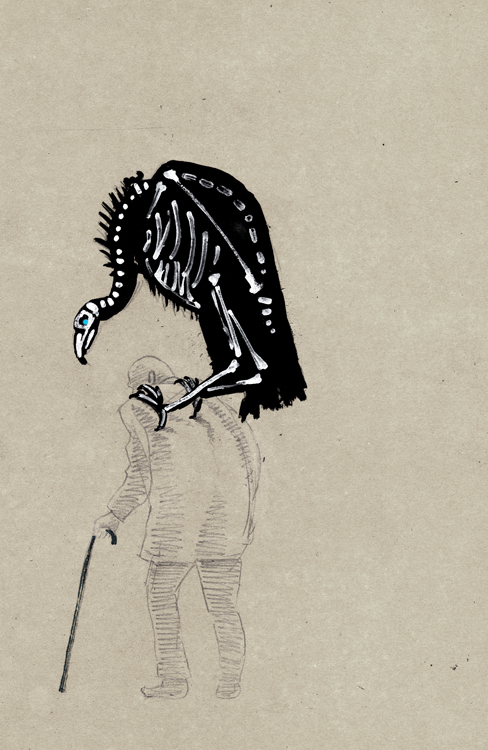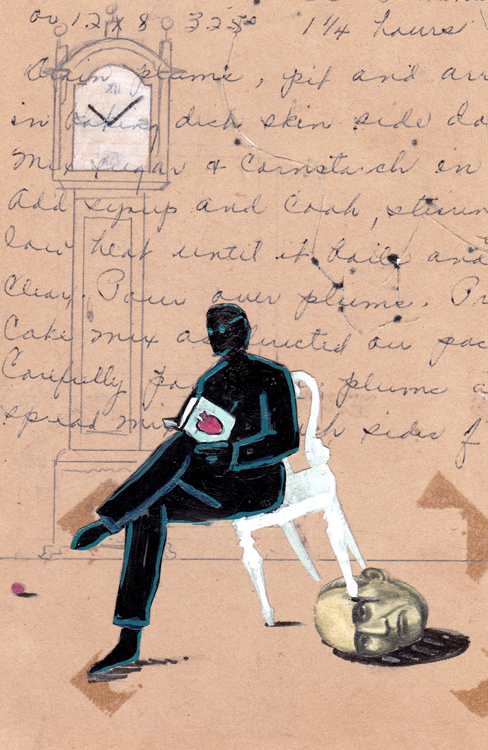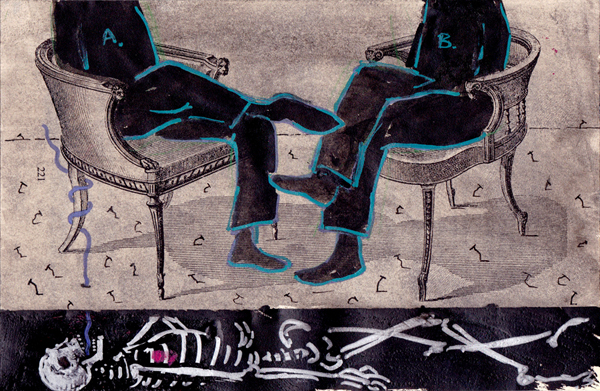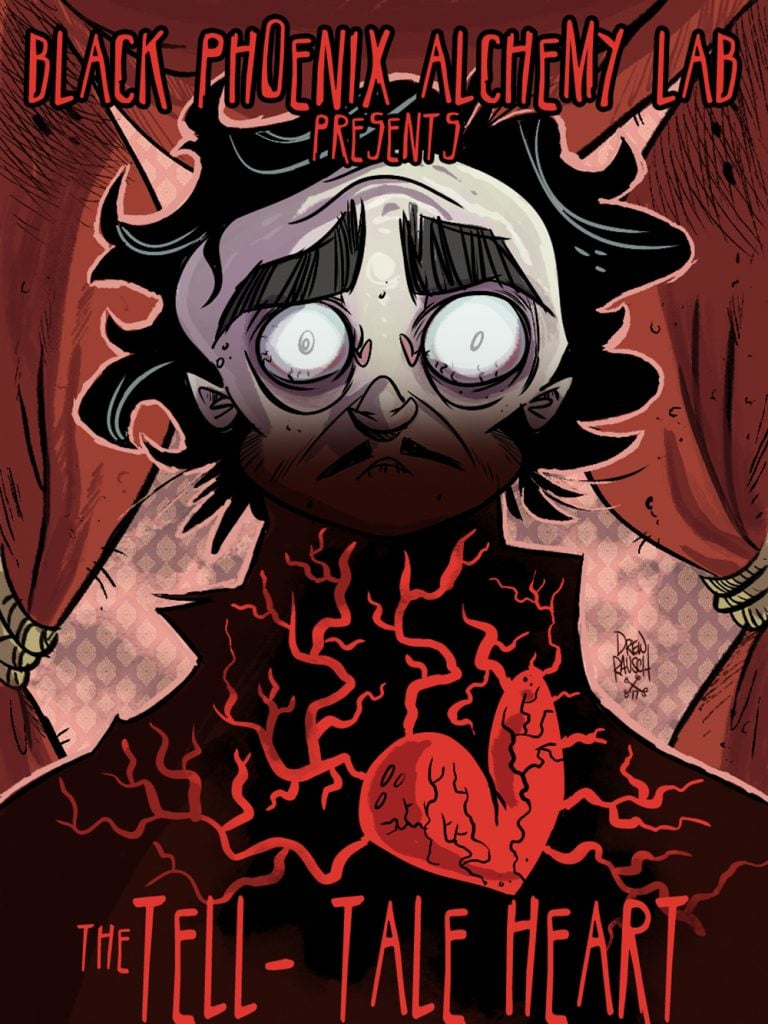A TELL TALE HEART; EDGAR ALLEN POE

Born in America in the early 1800s, Edgar Allen Poe, became a pioneer of the Gothic Horror* genre, his works well known for their mystery, atmosphere and macabre.* Poe wrote in many formats throughout his career; poetry, short stories, novels, textbooks, book reviews and essays. His prose told tales of death, fear, and the unknown. Furthermore Poe is one of the first recorded pioneers of the Science Fiction* genre.
*Science Fiction: Fiction based on imagined future scientific or technological advances and major social or environmental change.
*Gothic Horror; A style of fiction characterised by elements of fear, horror death and gloom. Often combined with elements of romanticism such as nature individuality and high emotion.
*Macabre; Having death as a subject; compromising or including a personalised representation of death. Dwelling on the gruesome. Tending to produce horror in the beholder.
SUMMARY
This story is told by an unnamed narrator, as an account to deny his insanity, whilst simultaneously confessing to killing the elderly man he lived with. They describe how they were drove into killing the man due to a fear of his 'evil eye', which is blue, clouded and 'vulture like'. Leading up to the murder the narrator describes how they crept into the old man's room each night, to shine a slither of light on his eye, however, for seven nights the old man's eyes are closed, so the narrator is 'unable to do his work'. On the eight night the old man wakes from the sound of the narrator, crying out with fear. The narrator bides his time in the darkness, until he begins to hear a thudding sound which he believes to be the old man's heart. In fear of a neighbour hearing the heart also, the narrator kills the man, dismembers his body and places it beneath the floorboards in the old mans room.
Throughout their retelling, the narrator claims to be perfectly sane, proving this with detail of the meticulous nature of the murder, claiming an insane man couldn't have 'been so smart'. As he is finishing cleaning the crime scene, the police arrive at the house, claiming a neighbour to have reported the old man's shriek. The narrator remains calm and leads the officers through the house, even bringing them to the crime-scene itself, the old man's bedroom, claiming the old man is out of town. It is in the bedroom the narrator once more begins to hear the thudding noise he believes to be the old man's heart, and is so convinced the officers can hear it also that he professes his guilt and tells the officers to tear up the floorboards.
KEY SEMINAR NOTES:
- It's important to note the simplicity of this short story, the lack of details allows Poe to highlighting the narrators obsession with the smaller details, such as the eye, the beating of the heart and the narrators own sanity.
- The story can be conceived as a study of madness, the narrator is showing clear signs of suffering from a mental illness; hearing things, monomania and their irrational fear of the eye. Their rationalisation of these things, along with their insistence of sanity, further solidifies this.
- The narrator is suffering from a warped sense of reality, which leaves a lot of space for imaginative illustration. He is unable to recognise how his description of his 'sanity' reveals his actual insanity nor is he able to realise the sound of the heart isn't really there.
- The narrator themselves is describes as a highly anxious character, with extreme paranoia, hyper-fixation and what they describe as 'sharpened senses', here we can explore how to illustrate the character without any instruction on physical appearance.
KEY THEMES
- SANITY: Throughout the story, the narrator is consistently denying their insanity: "But why would you say I am mad?" "How, then am I mad?" " You think that I am mad. Madmen know nothing. But you should have seen me." And yet throughout the story the narrator seems to contradict himself by describing his obsession with the eye, and the paranoia that he could hear the old man's heart even after he had killed him and dismembered the body. Does being obsessed with one's own sanity, eventually lead one to become insane?
- LOVE VS HATE: Poe uses this story to highlight how sometimes love and hate for a person can coexist, the narrator states early on that he 'loves' the old man, yet this love did not stop him from not only killing him, but dehumanising his corpse by dismembering it and hiding it for the narrators own intentions, to hide what he did. It is even possible to correlate the narrator's murder of the old-man as an act of love itself. He describes the evil of the eye, killing him could be an act of saving the old man from the evil of his eye.
- EVIL: Throughout the story the narrator describes the evil of the old mans eye, he describes this fear of evil as to what drove him to kill the man, but was it the presence of evil itself which caused him to act upon his fear?

KEY QUESTIONS TO ANSWER THROUGH ILLUSTRATION
























- Who is the narrator? Are they male or female? What is their relation to the old man?
- What fear lies behind the fear of the eye? Do they fear being watched? Is it the fear of evil? Why do they think the clouded eye is evil?
- What is the setting? Think about context of the time, what the house would have looked like, what the characters would have worn?
- Was the narrator suffering from insanity? What was the treatment of insanity in those times? How can one illustrate the obsessive nature of the main character?
- What happened next?
ARTIST IMPRESSIONS







KEY QUOTES
- "I think it was his eye! Yes, it was this! He had the eye of a bird, a vulture - a pale blue eye with a film over it. Whenever it fell on me, my blood ran cold."
- "True! Nervous - very, very nervous I had been and am!"
- "I moved it slowly, very slowly, so that I might not interfere with the old mans sleep. And then, when my head was just well in the room, I undid the lantern just so much that a single thin ray of light fell upon the vulture eye."
- "It was not the old man who was a problem for me, but his Evil Eye.
- "Then I heard a noise, and I knew it was the sound of human terror. It was the low sound that arises from the bottom of the soul."
- "I knew that he had been lying awake since the first noise, when he had turned in the bed. His fears had been ever since growing upon him."
- "It was open - wide, wide open - and I grew angry as I looked at it. I saw it clearly - all a dull blue, with a horrible veil over it that chilled my bones; but I could see nothing else of the old mans face or person."
- "Now there came to my ears a low, dull, quick sound, such as a watch makes when inside a piece of cotton. I knew that sound well, too. It was the beating of the old mans heart."
- "The beating grew louder, louder! I thought the heart must burst."
- "The old man was dead. I removed the bed and examined the body. I placed my hand over his heart and held it there for many minutes. There was no movement. He was stone dead. His eyes would trouble me no more."
- "First of all I took apart the body. I cut off the head and the arms and the legs"
- "There was nothing to wash out - no mark of any kind - no blood whatever. I had been too smart for that. A tub had caught it all - ha! ha!"
- "I could bear those smiles no longer! I felt that I must scream or die! and now - again! Louder! Louder! Louder!"
- "'Villains!' I cried, "Pretend no more! I admit the deed! tear up the floor boards! Here, here! It is the beating of his hideous heart!"
1800s AMERICAN HOUSES
Would the old man have been rich or poor? The narrator mentions the floorboards, which would have been an indicator of wealth as many richer houses would have had carpeted floors at the time. However, the narrator also mentioned draining the old mans body in 'the tub' which would have been something very few Americans at the time owned, poorer families would have still have an outhouse and a metal bathing tub. I've decided to look at richer houses in this research as I think it would give me a lot more to work with when creating my set.
In the 1800s there were two main styles for houses in upper class America which I think would match this story well; Gothic Revival, a style which mimics medieval houses and churches, with steeped roofs and arched gothic features; Second Empire houses, referring to houses from the French empire, with similar gothic features, and mansard roofs.






What would the old mans bedroom look like?



What would the bath the narrator drained the body in look like?


How would my two main characters have dressed?




how would the police officers have dressed?




Comments
Post a Comment